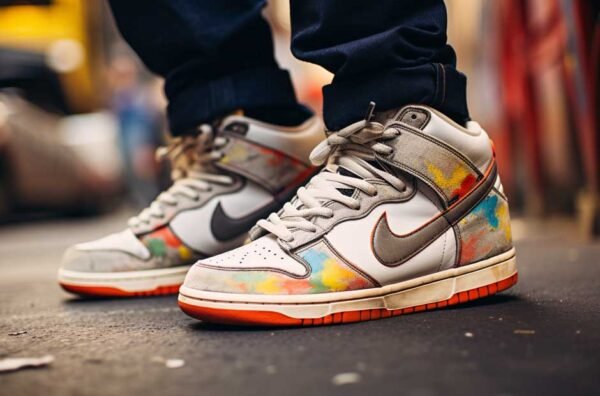In this very fast-changing world where innovation is inevitable, a product that satisfies the consumer’s wants and needs is one of a kind. Every product, it might be in agriculture, education, architecture, health, or even in cosmetics, has different and unique qualities. Nowadays, because of many products in the market, consumers need also to evaluate many products too, which makes it difficult to identify the products to believe in and to know which product is worth it.
In terms of cosmetics, where there are too many brands available in the market, it will be really hard which brand and what product to trust. You need to take more time to decide since we are talking here about your skin that carries the entirety of the beauty. Beauty standard now focuses on how to achieve that Japanese Glass skin, where your skin looks so hydrated, smooth, and plumy.
To achieve that J-Beauty Glass Skin, it is important to know the best Japanese Facial Cleansing Foam. But how to choose the best and most appropriate J-Facial Cleansing Foam for you? Well, before choosing your Facial Foam, you need to know your skin type. Every skin type exhibits different needs, so it is important to be mindful of your skin.
Table of Contents
Different Skin Types
Choosing the right facial cleansing foam for your skin type can be confusing and time-consuming, especially when the market is bombarded with too many products. Some are offering Aloe facial cleansing foam, Charcoal facial cleansing foam, and other products promising effectiveness. Not all commercial products may not be suitable and best for your skin. So, before you choose, know first your skin type because every skin type reacts differently to each ingredient.
Here are various skin types that we usually have: Normal skin, Dry Skin, Oily Skin, Combination Skin, and Sensitive Skin.
- Normal Skin – This kind of skin is neither too dry nor too oily. It has a well-balanced sebum production and good blood circulation. In other words, this skin has a regular texture, no imperfections, is soft in appearance, is clean, and does not need special care.
- Dry Skin – In most cases, dry skin is caused by external factors such as the sudden change of weather, low air humidity, immersion in hot water, and even pollution in the environment. Though this kind of skin is usually temporary, yet, for some people, it may occur more often because of exposure to the said environments and can also be a lifelong case of the skin. Since dry skin can leave a crack, this might be a reason that facial skin will be susceptible and exposed to bacteria that may cause acne, eczema, or worst it may develop infections if not properly taken care of.
Additionally, dry skin has different signs and symptoms depending on the factors of age, health status, and the environment you are living in. Generally, it is characterized by a feeling of tightness and roughness. The color of skin may appear ashy gray color because of the occurrence of itching, redness, desquamation, and small cracks. So, if you have observed that your face might have small cracks, treat it immediately because it will get a more serious case as it gets deeper and even bleeds.
- Oily Skin – It is characterized by a greasy appearance. This kind of skin is caused by excessive fat production and sometimes is caused by genetic and/or hormonal causes. Frequently present during adolescents and young people under 30 years old, and usually, this causes the appearance of acne.
- Combination Skin – This skin is a mix of both dry and oily skin since the distribution of sebum and sweat glands is not equal. Usually, in this kind of skin, the area of more oil is in the T-zone (forehead, nose, and chin), while the dry or normal area is on the cheeks.
- Sensitive Skin – Unfortunately, sensitive skin is more vulnerable to skin damage because it reacts to stimuli to which another skin type does not react. It is sometimes referred to as fragile skin, usually with the feeling of discomfort, heat, tightness, redness, and itching. The skin loses its natural barrier function, making it easy for microorganisms and pollutants to enter directly into the skin, which increases the possibility of having an infection and allergic reactions. Extra care is needed for this skin, for it is delicate. It must be protected from dryness and roughness.
How to Identify Your Skin Type
Now that you already know the Five (5) basic skin types let us know how to identify your skin type in 3 ways: Take the day test, Wash Test, and go to a Dermatologist.
- Take the day test – The very simple way to determine your skin type is to observe how your skin performs in a day, from morning to evening on a typical day.
At the end of the day, if your skin results to:
Minimal oil, flakiness, or redness, or not at all – Normal Skin
Flaky or tight skin – Dry Skin
Feeling oily and looking shiny – Oily Skin
Shimmering T-zone but the rest of your face skin is matte – Combination Skin
Itchy, red, or inflamed skin – Sensitive Skin
- Wash Test – If you take a shower in the afternoon because of the hot weather, a day-long test will not make sense. So, just do the wash test instead. Wash your face with your gentle cleanser, and do not apply any other product. After washing, wait for 30 minutes and examine how your skin feels based on the above result.
- Go to a Dermatologist – If you do have your budget, having a check with a dermatologist can be done. A dermatologist has proper ways and methods for helping you to evaluate your skin.
Just bare in mind that your skin type may change over the years because of these factors: Pregnancy, diet, location, and other factors that can change your skin type. The best way to monitor your skin is to do a soft pinch test to evaluate your skin’s hydration levels.
How Can I Check My Skin Type At Home?
If you want a more specific way of knowing your skin type at home, here are two methods that you can use:
- Watch-and-Wait Method – This kind of home method allows you to understand and know your skin type by simply observing how your skin behaves after cleansing.
Begin by carefully washing your face with a gentle cleanser and patting it dry. Wait for thirty minutes to observe.
- If your skin appears glossy or shiny throughout, then you most likely have an oily skin type.
- If it feels tight, tingly, flaky or, scaly, then you likely have a dry skin type.
- If the gloss or shine is only in the T-zone of your face, you probably have a combination skin type.
- If your skin feels moisturized, hydrated, and comfortable but not oily, you likely have normal skin.
- If your skin appears red, feels itchy, or inflamed, you might have sensitive skin.
- Blotting Sheet Method – This method needs a blotting sheet to absorb the oil. Doing this can help you understand what type of skin you have at home.
The same with the first method, wash your face with a gentle cleanser and pat it dry. Wait for 30 minutes. After 30 minutes, press blotting sheets to the different areas of your face, then raise the sheet to see oil markings.
- If your sheets are soaked up with an abundance of oil from all face areas, you must have an oily skin type.
- If they absorb little to zero oil, then you must have a dry skin type.
- If the sheets show only portions or a small amount of oil from your T-zone, you have combination skin.
- If you only see minimal oil from every area of your face, you most likely have normal skin.
- If you can see minimal oil in the sheet and your skin looks red, feels itching, and inflamed, most probably, you may have sensitive skin.
How To Choose The Right Cleanser
In a Japanese Beauty Skincare routine, it is a must to clean your face before applying the other products to achieve that glassy and glowing skin. To clean that face and remove the makeup, a cleanser is a solution for that. So how to choose the right cleanser? Do we need that harsh cleanser? Or a gentle yet deep cleansing facial foam and/or that anti-acne pure deep cleansing facial foam? The answer depends on your skin type.
- For Oily Skin – it is best to use a gentle but effective cleanser with no pore-cloggers, such as coconut oil and shea butter.
- For Dry Skin – if simply washing your face will still result to dry skin, use a micellar cleanser instead or a cleanser with glycolic acid to provide hydration.
- Combination Skin – for this kind of skin, gel or creamy cleanser is the best option or an aloe facial cleansing foam.For Normal Skin – a gentle cleanser will help maintain the no-problem skin type.
- For Sensitive Skin – for sensitive and acne-prone skin, use an anti-acne pure deep cleanser that has salicylic acid that is oil-soluble and therefore can penetrate the epidermis to dissolve the dead skin cells and sebum that causes acne or you can use a cleanser with protease enzyme that eliminates waste from the skin.
Japanese Face Washes & Cleansers For Sensitive Skin
We discussed earlier the type of cleanser for the different types of skin. Now, let us talk about a Japanese brand that is a must-buy make-up remover facial cleansing foam.
Yes, there is a lot of promising cleanser on the market, but we recommend you buy facial cleanser for sensitive skin in the M-Dear Brand. This cleanser is M-Dear Speedy Cleansing. A facial cleansing gel that will help reduce pimples and smoothen the skin. The product contains no flavoring agent or coloring agent, so it’s gentle enough for sensitive skin and is perfect and suitable for all types of skin. Gently remove makeup and impurities while retaining moisture. It helps tighten pores and reduces pimples and comedowns. The product can still be applied even with wet hands.
It has Enzyme Protease that helps to degenerate and eliminate waste matters from your facial skin and Artichoke Leaf that functions as an antioxidant, helping to minimize pores. This Japanese Facial Foam is superb!
You can purchase it at Jcomfy. Add to the cart now and access the link https://www.jcomfy.com/en/home/.





